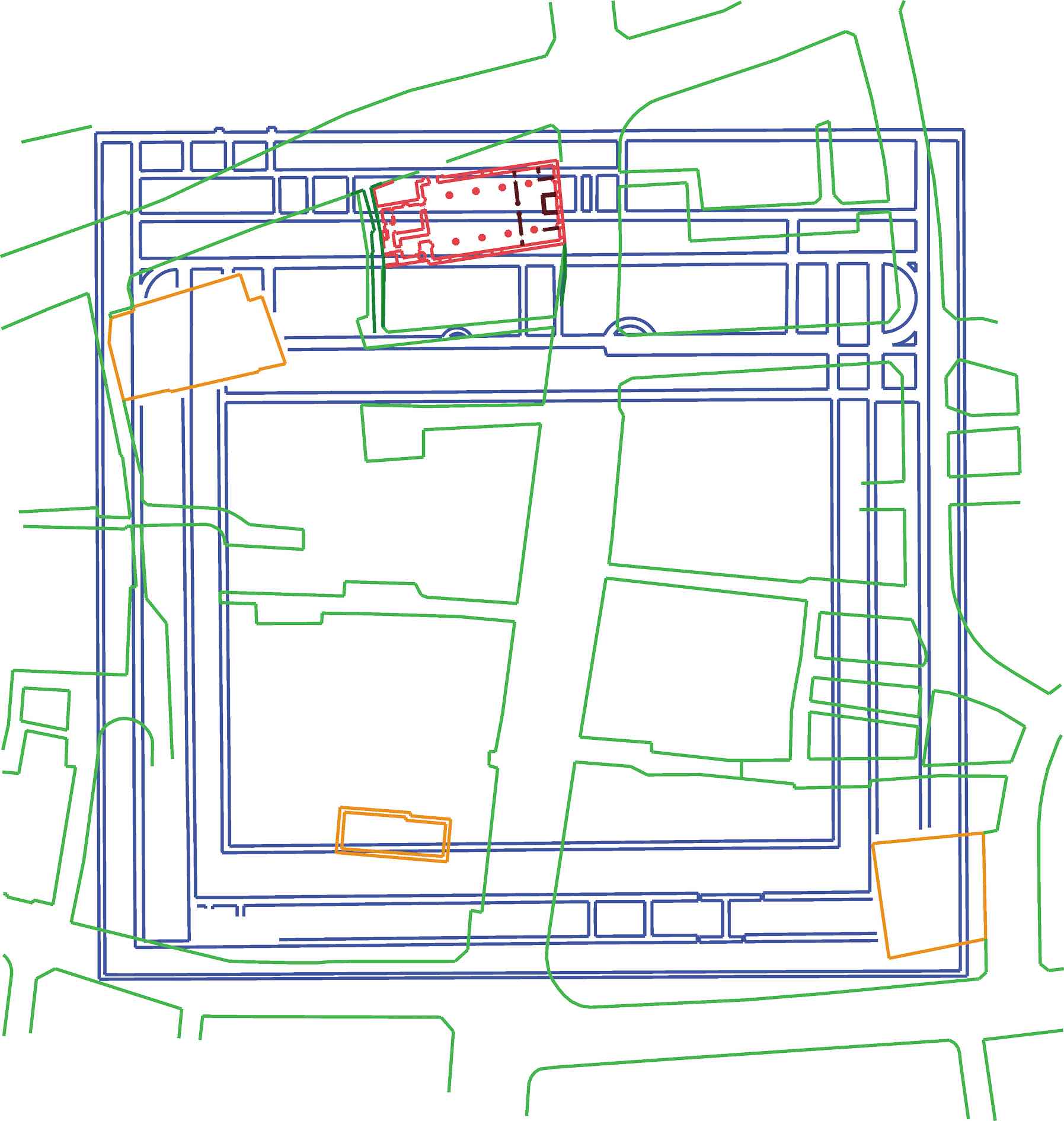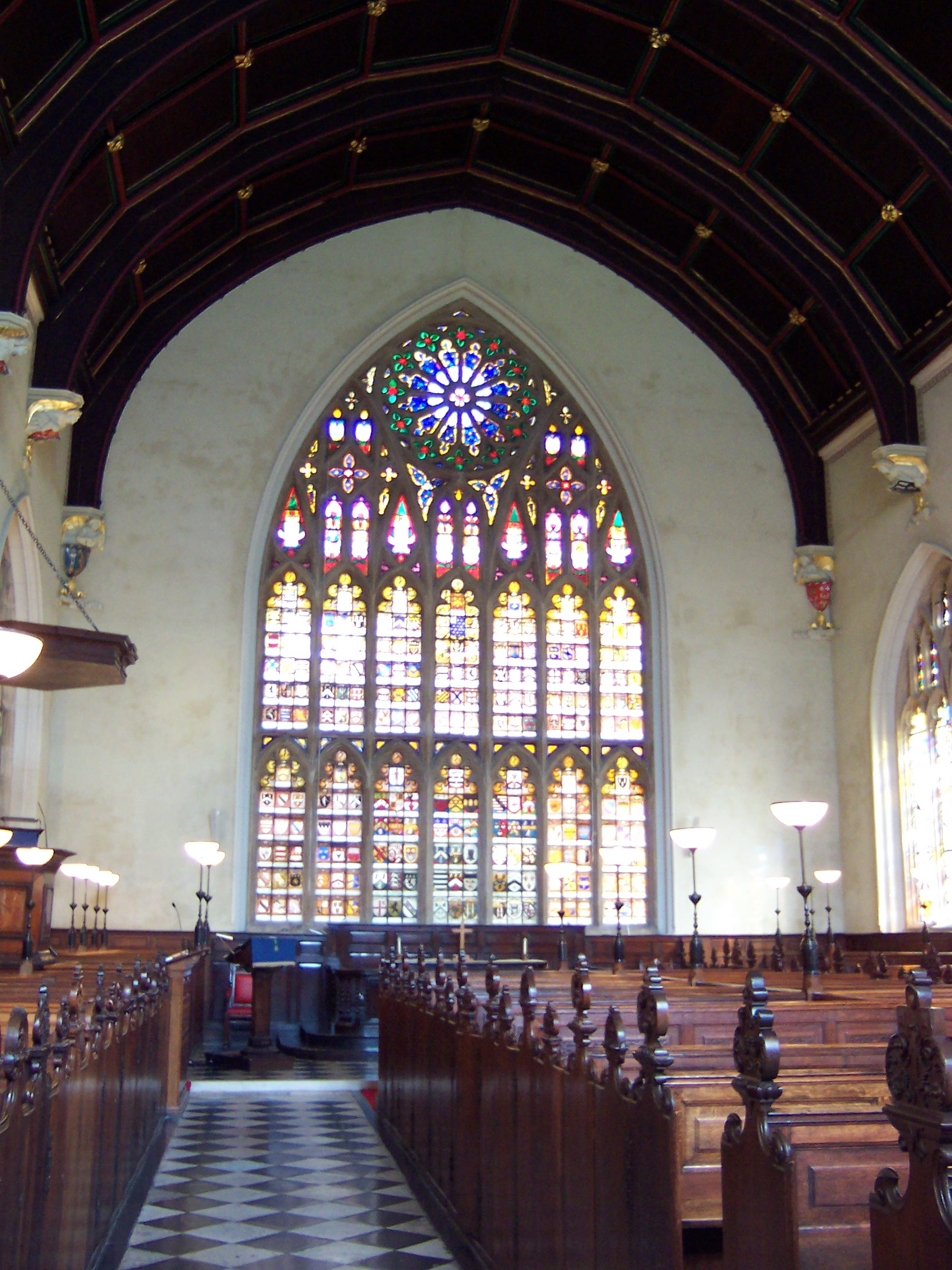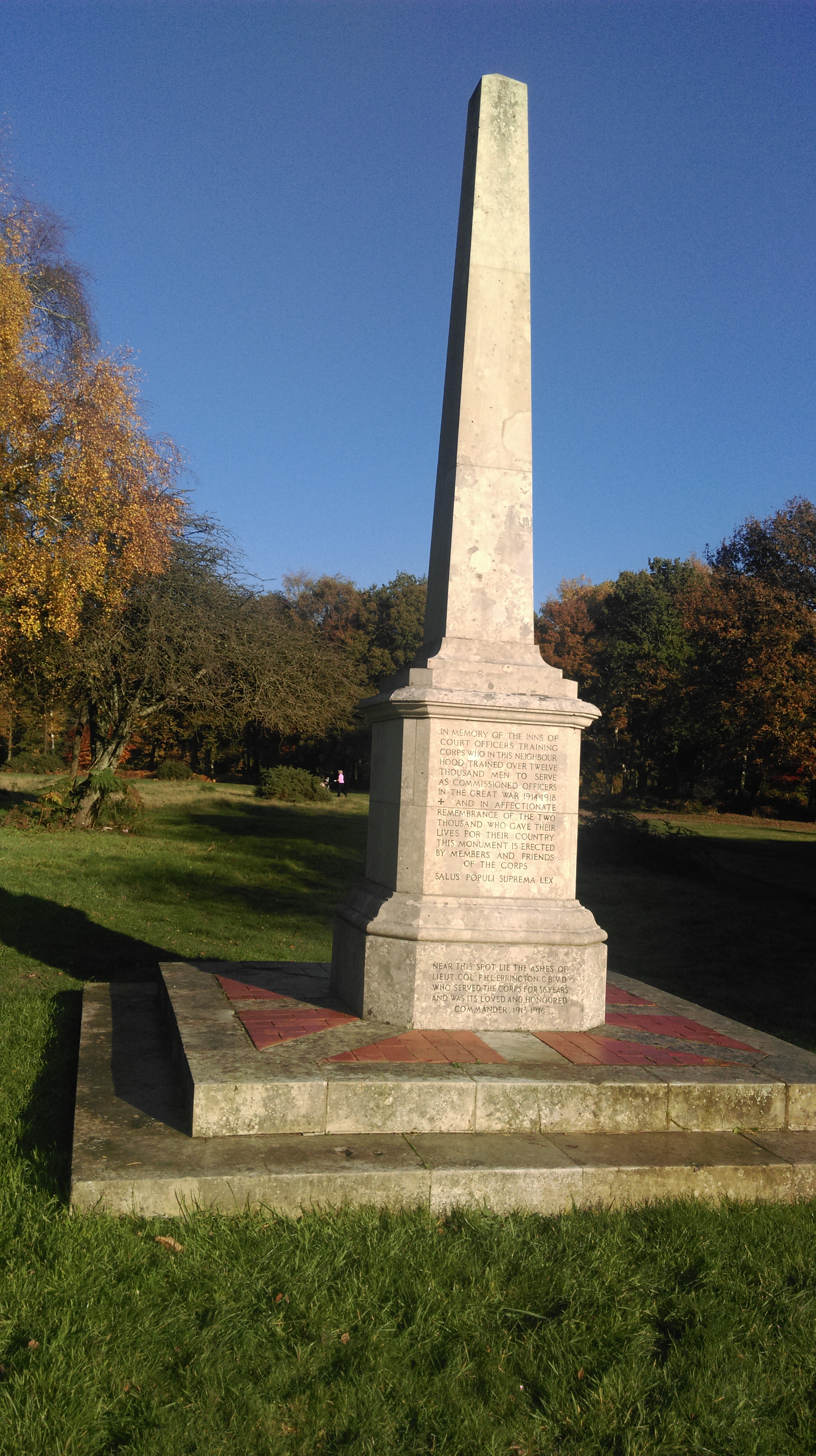|
Henry Wace (Anglican Priest)
Henry Wace (10 December 1836–9 January 1924) was an English Anglican priest and ecclesiastical historian who served as Principal of King's College, London, from 1883 to 1897 and as Dean of Canterbury from 1903 to 1924. He is described in the ''Dictionary of National Biography'' as "an effective administrator, a Protestant churchman of deep scholarship, and a stout champion of the Reformation settlement". Early life and education Wace was born in London on 10 December 1836 and was educated at Marlborough College, Rugby School, King's College, London, and Brasenose College, Oxford ( BA '' literae humaniores'' and mathematics, Honorary Fellow 1911). Career He took Holy Orders and served curacies at St Luke's, Berwick Street (1861–63), St James's, Piccadilly (1863–69), and Grosvenor Chapel (1870–72). He moved to Lincoln's Inn, where he served first as Chaplain (1872–80) and later as Preacher (1880–96). He was additionally Chaplain of the Inns of Court Rifle Volun ... [...More Info...] [...Related Items...] OR: [Wikipedia] [Google] [Baidu] |
The Very Reverend
The Very Reverend is a Style (manner of address), style given to members of the clergy. The definite article "The" should always precede "Reverend" as "Reverend" is a style or fashion and not a title. Catholic In the Catholic Church, the style is given, by custom, to priests who hold positions of particular note: e.g. vicars general, episcopal vicars, judicial vicars, ecclesiastical judges, vicars forane (deans or archpriests), provincials of religious orders, rectors or presidents of cathedrals, seminaries or colleges/universities, priors of monasteries, Canon (priest), canons, for instance. (The style is ignored if the holder is a monsignor or a bishop; otherwise, a priest who is "Very Reverend" continues to be addressed as Father.) Monsignors of the grade of Chaplain of His Holiness were formerly styled as ''The Very Reverend Monsignor'', while honorary prelates and protonotary apostolics were styled ''The Right Reverend Monsignor''. Now, apart from legitimate custom or acquire ... [...More Info...] [...Related Items...] OR: [Wikipedia] [Google] [Baidu] |
Curate
A curate () is a person who is invested with the ''care'' or ''cure'' (''cura'') ''of souls'' of a parish. In this sense, "curate" means a parish priest; but in English-speaking countries the term ''curate'' is commonly used to describe clergy who are assistants to the parish priest. The duties or office of a curate are called a curacy. Etymology and other terms The term is derived from the Latin ''curatus'' (compare Curator). In other languages, derivations from ''curatus'' may be used differently. In French, the ''curé'' is the chief priest (assisted by a ''vicaire'') of a parish, as is the Italian ''curato'', the Spanish ''cura'', and the Filipino term ''kura paróko'' (which almost always refers to the parish priest), which is derived from Spanish. Catholic Church In the Catholic Church, the English word "curate" is used for a priest assigned to a parish in a position subordinate to that of the parish priest. The parish priest (or often, in the United States, the "pastor ... [...More Info...] [...Related Items...] OR: [Wikipedia] [Google] [Baidu] |
Cloister
A cloister (from Latin ''claustrum'', "enclosure") is a covered walk, open gallery, or open arcade running along the walls of buildings and forming a quadrangle or garth. The attachment of a cloister to a cathedral or church, commonly against a warm southern flank, usually indicates that it is (or once was) part of a monastic foundation, "forming a continuous and solid architectural barrier... that effectively separates the world of the monks from that of the serfs and workmen, whose lives and works went forward outside and around the cloister." Cloistered (or ''claustral'') life is also another name for the monastic life of a monk or nun. The English term ''enclosure'' is used in contemporary Catholic church law translations to mean cloistered, and some form of the Latin parent word "claustrum" is frequently used as a metonymic name for ''monastery'' in languages such as German. History of the cloister Historically, the early medieval cloister had several antecedents: the ... [...More Info...] [...Related Items...] OR: [Wikipedia] [Google] [Baidu] |
Courtyard
A courtyard or court is a circumscribed area, often surrounded by a building or complex, that is open to the sky. Courtyards are common elements in both Western and Eastern building patterns and have been used by both ancient and contemporary architects as a typical and traditional building feature. Such spaces in inns and public buildings were often the primary meeting places for some purposes, leading to the other meanings of court. Both of the words ''court'' and ''yard'' derive from the same root, meaning an enclosed space. See yard and garden for the relation of this set of words. In universities courtyards are often known as quadrangles. Historic use Courtyards—private open spaces surrounded by walls or buildings—have been in use in residential architecture for almost as long as people have lived in constructed dwellings. The courtyard house makes its first appearance ca. 6400–6000 BC (calibrated), in the Neolithic Yarmukian site at Sha'ar HaGolan, in ... [...More Info...] [...Related Items...] OR: [Wikipedia] [Google] [Baidu] |
Burial
Burial, also known as interment or inhumation, is a method of final disposition whereby a dead body is placed into the ground, sometimes with objects. This is usually accomplished by excavating a pit or trench, placing the deceased and objects in it, and covering it over. A funeral is a ceremony that accompanies the final disposition. Humans have been burying their dead since shortly after the origin of the species. Burial is often seen as indicating respect for the dead. It has been used to prevent the odor of decay, to give family members closure and prevent them from witnessing the decomposition of their loved ones, and in many cultures it has been seen as a necessary step for the deceased to enter the afterlife or to give back to the cycle of life. Methods of burial may be heavily ritualized and can include natural burial (sometimes called "green burial"); embalming or mummification; and the use of containers for the dead, such as shrouds, coffins, grave liners, and ... [...More Info...] [...Related Items...] OR: [Wikipedia] [Google] [Baidu] |
Cornhill, London
Cornhill (formerly also Cornhil) is a ward and street in the City of London, the historic nucleus and financial centre of modern London. The street runs between Bank Junction and Leadenhall Street. The hill from which it takes its name is one of the three ancient hills of London; the others are Tower Hill, site of the Tower of London, and Ludgate Hill, crowned by St Paul's Cathedral. The highest point of Cornhill is at above sea level. History Cornhill is one of the traditional divisions of the City. The street contains two of the City churches designed by Sir Christopher Wren: St. Michael, Cornhill, and St Peter upon Cornhill, reputed to occupy the oldest Christianised site in London. Both are on the site of the Roman forum of ''Londinium''. At its other end it meets Threadneedle Street, Poultry, Lombard Street and others at Bank junction. Sir Thomas Gresham's original Royal Exchange fronted onto Cornhill, but its successor on the site, designed by William Tite, faces ... [...More Info...] [...Related Items...] OR: [Wikipedia] [Google] [Baidu] |
St Michael, Cornhill
St Michael, Cornhill, is a medieval parish church in the City of London with pre-Norman Conquest parochial foundation. It lies in the ward of Cornhill. The medieval structure was lost in the Great Fire of London, and replaced by the present building, traditionally attributed to Sir Christopher Wren. The upper parts of the tower are by Nicholas Hawksmoor. The church was embellished by Sir George Gilbert Scott and Herbert Williams in the nineteenth century. Early history The church of St Michael, Cornhill is sited directly above the location of the western apse of the former London Roman basilica (built c. AD90-AD120). Although its walls are not aligned with the basilica, some of the church's foundations still sit directly on top of the roman foundations. The first reference to the church was in 1055, when Alnod the priest gifted it to the Abbey of Evesham, "Alnod sacerdos dedit ecclesiam, beati Michaelis in Cornhulle, London". The patronage remained in the possession of the A ... [...More Info...] [...Related Items...] OR: [Wikipedia] [Google] [Baidu] |
Rector (ecclesiastical)
A rector is, in an ecclesiastical sense, a cleric who functions as an administrative leader in some Christian denominations. In contrast, a vicar is also a cleric but functions as an assistant and representative of an administrative leader. Ancient usage In ancient times bishops, as rulers of cities and provinces, especially in the Papal States, were called rectors, as were administrators of the patrimony of the Church (e.g. '). The Latin term ' was used by Pope Gregory I in ''Regula Pastoralis'' as equivalent to the Latin term ' (shepherd). Roman Catholic Church In the Roman Catholic Church, a rector is a person who holds the ''office'' of presiding over an ecclesiastical institution. The institution may be a particular building—such as a church (called his rectory church) or shrine—or it may be an organization, such as a parish, a mission or quasi-parish, a seminary or house of studies, a university, a hospital, or a community of clerics or religious. If a r ... [...More Info...] [...Related Items...] OR: [Wikipedia] [Google] [Baidu] |
Principal (university)
The principal is the chief executive and the chief academic officer of a university or college in certain parts of the Commonwealth. In the United States, the principal is the head of school at most pre-university, non-boarding schools. Canada Queen's University, the constituent colleges of the University of Toronto and McGill University in Canada have principals instead of presidents or rectors, as a result of their Scottish origins. In addition Bishop's University, and the Royal Military College of Canada also have principals. England Many colleges of further education in England have a principal in charge (e.g., Cirencester College and West Nottinghamshire College). At Oxford University, many of the heads of colleges are known as the principal, including Brasenose, Green Templeton, Harris Manchester, Hertford, Jesus, Lady Margaret Hall, Linacre, Mansfield, St Anne's, St Edmund Hall, St Hilda's, St Hugh's, and Somerville. At Cambridge University, heads ... [...More Info...] [...Related Items...] OR: [Wikipedia] [Google] [Baidu] |
Warburton Lecturer
The Warburton Lectures (until the end of the nineteenth century often called the Warburtonian Lectures) are a series of theology lectures held in Lincoln's Inn, London. They were established in 1768 with money given by William Warburton, and were intended to bring young divines to the notice of London audiences. The set topic was the proof of Christianity through prophecies. Lecturers *1768–1772 Richard Hurd *1773–1776 Samuel Hallifax *1777–1780 Lewis Bagot *1781–1785 East Apthorp *1800–1804 Robert Nares *1807 Edward Pearson *1814–1815 Philip Allwood *1821–1825 John Davison ''Discourses on Prophecy, in which are considered its structure, use and inspiration'' (1824) *1829–1832 William Rowe Lyall: his ''Propædia Prophetica'' of 1840 returned to the same circle of ideas, though Lyall made a disclaimer that this work was not the text of the lectures *1833–1836 Frederick Nolan *1837–1840 Alexander McCaul *1841–1845 Benjamin Harrison ''Prophetic Outlines ... [...More Info...] [...Related Items...] OR: [Wikipedia] [Google] [Baidu] |
Inns Of Court Regiment
The Inns of Court Regiment (ICR) was a British Army regiment that existed under that name between May 1932 and May 1961. However, the unit traces its lineage back much further, to at least 1584, and its name lives on today within 68 (Inns of Court & City and Yeomanry) Signal Squadron, as part of 71st (City of London) Yeomanry Signal Regiment. Early history Back in the 14th to 16th centuries, judges were called upon to perform functions that, in modern times, would hardly be considered to come within judicial office. Accordingly, members of the Inns of Court found themselves called to fight in the wars of King John or against Robert the Bruce. One such defence of Medieval London was organised in 1381 against Wat Tyler, during the Peasants' Revolt (when the Chief Justice was killed). In 1467, the Chief Justice of the Exchequer, then Recorder of the city of London, was instrumental in defeating a Lancastrian attack on the city of London. Further accounts, such as Henry Machyn's di ... [...More Info...] [...Related Items...] OR: [Wikipedia] [Google] [Baidu] |
Lincoln's Inn
The Honourable Society of Lincoln's Inn is one of the four Inns of Court in London to which barristers of England and Wales belong and where they are called to the Bar. (The other three are Middle Temple, Inner Temple and Gray's Inn.) Lincoln's Inn, along with the three other Inns of Court, is recognised as being one of the world's most prestigious professional bodies of judges and lawyers. Lincoln's Inn is situated in Holborn, in the London Borough of Camden, just on the border with the City of London and the City of Westminster, and across the road from London School of Economics and Political Science, Royal Courts of Justice and King's College London's Maughan Library. The nearest tube station is Holborn tube station or Chancery Lane. Lincoln's Inn is the largest Inn, covering . It is believed to be named after Henry de Lacy, 3rd Earl of Lincoln. History During the 12th and early 13th centuries, the law was taught in the City of London, primarily by the clergy. Then two ... [...More Info...] [...Related Items...] OR: [Wikipedia] [Google] [Baidu] |


.jpg)





